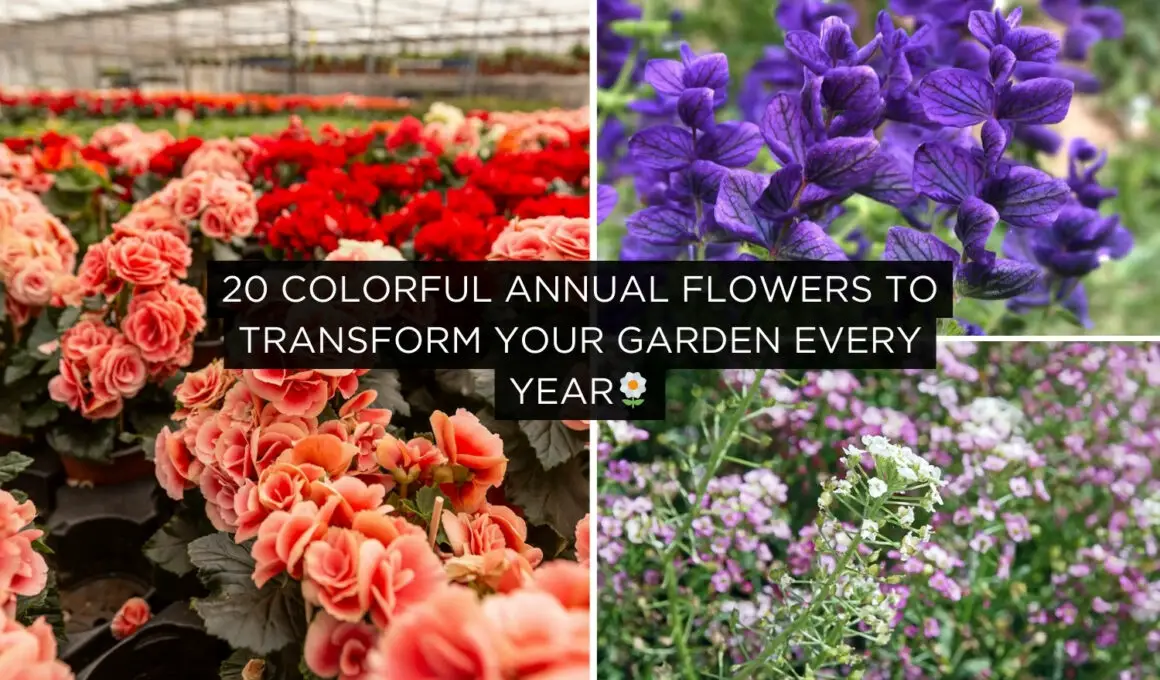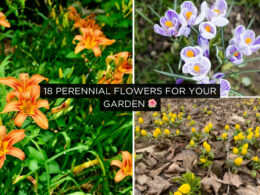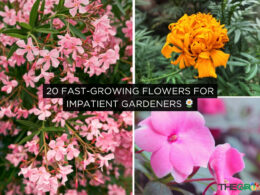In This Article Show
As an avid gardener who’s seen the transformative power of flowers firsthand, I’m excited to share with you the magic of annuals. Annual flowers, with their ability to bloom vibrantly throughout their one-year lifecycle, offer a unique opportunity for gardeners to refresh their landscapes with new colors and textures every season.
Whether you’re looking to fill a sunny border, add pizzazz to a patio container, or simply sprinkle some color in a shady nook, there’s an annual flower suited for every garden situation. Today, I’ll guide you through a curated list of 20 colorful annuals that promise to breathe new life into your garden year after year, making gardening an ever-evolving journey of discovery and beauty.
Colorful Annual Flowers to Transform Your Garden
1. Petunia
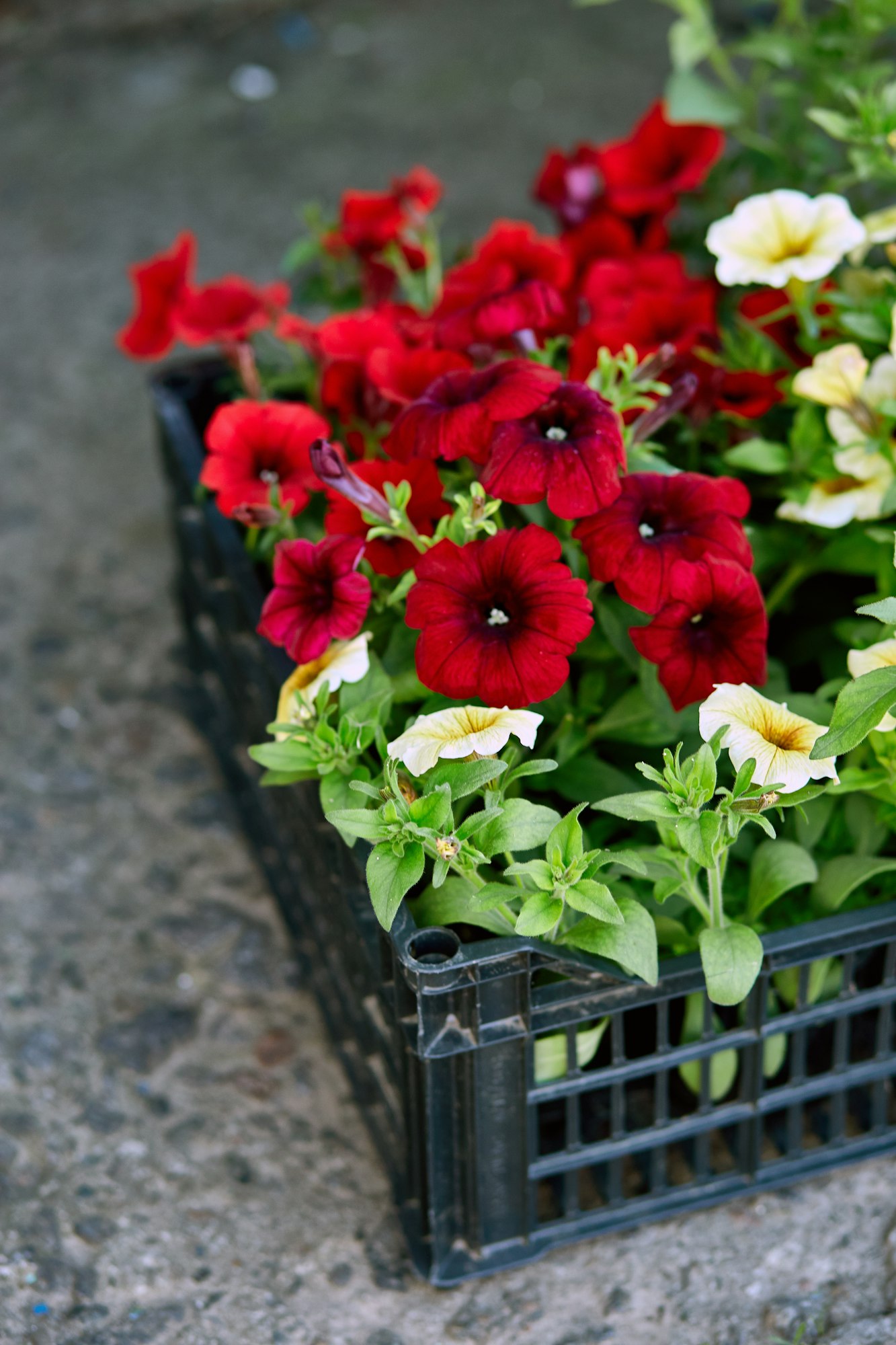
Petunias are one of the most beloved annual flowers, cherished for their wide range of vibrant colors and large, trumpet-shaped blooms. They thrive in both garden beds and containers, making them versatile additions to any outdoor space.
- Planting Conditions: Petunias prefer well-drained soil and a position in full sun to bloom their best. They’re quite tolerant of heat, making them perfect for summer gardens.
- Blooming Period: These annuals shine from spring through fall, offering a long season of color.
- Color Varieties: From pure white to deep purple, and even striped or edged in contrasting colors, petunias come in nearly every shade imaginable.
- Care Tips: Keep the soil moist but not soggy, and deadhead regularly to encourage new blooms. Applying a balanced, slow-release fertilizer every 4 to 6 weeks can also promote vigorous growth and flowering.
2. Marigold
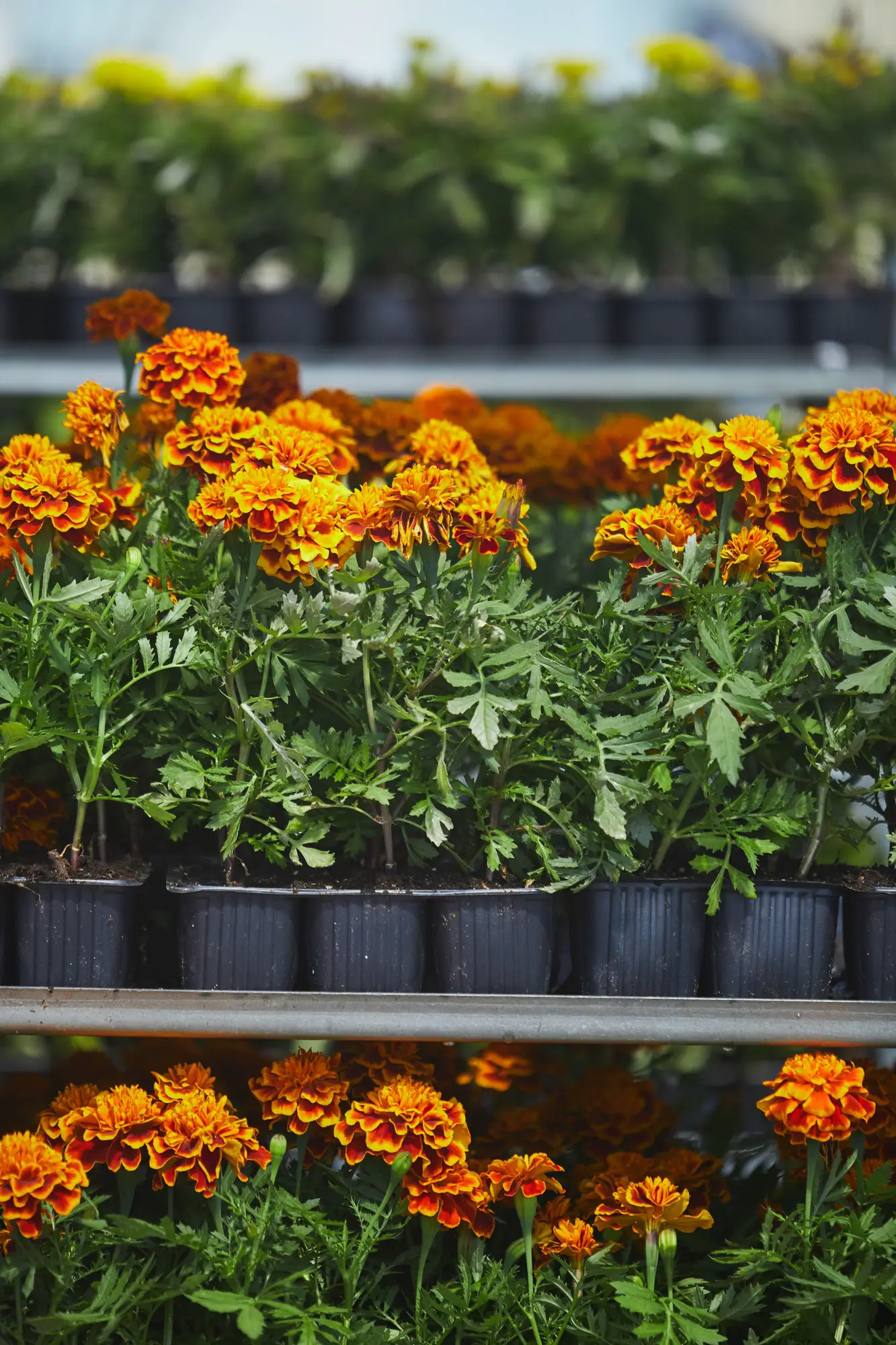
Marigolds are known for their cheerful, bright blooms and pungent scent, which can help deter pests. Easy to grow, they’re a popular choice for borders, vegetable gardens, and containers.
- Planting Conditions: These hardy annuals prefer full sun and well-draining soil. They’re quite adaptable, though, and can tolerate a bit of shade and less-than-ideal soil conditions.
- Blooming Period: Marigolds bloom from late spring until frost, providing continuous color when deadheaded regularly.
- Color Varieties: Marigold flowers range from sunny yellow and gold to orange and deep red, some with multiple colors per bloom.
- Care Tips: Water at the base to avoid wetting the foliage, which can lead to disease. Deadhead spent blooms to encourage more flowers. Marigolds are relatively low-maintenance and do not usually require fertilization if planted in decent soil.
3. Zinnia
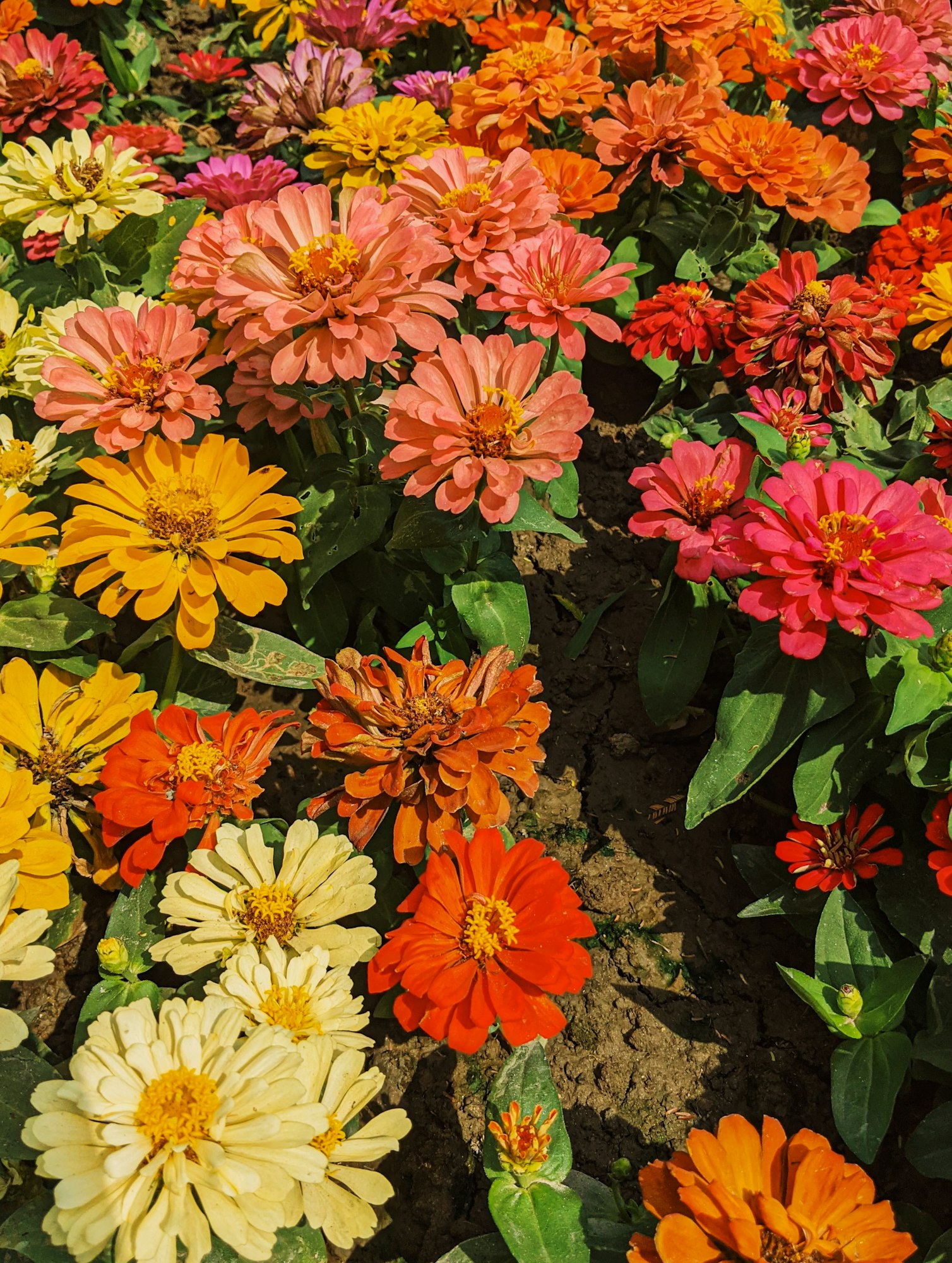
Zinnias are vibrant, hardy annuals that stand out for their bright, daisy-like flowers on tall, sturdy stems. They’re excellent for cutting gardens due to their long vase life.
- Planting Conditions
- Blooming Period: From early summer to the first frost, zinnias provide a continuous display of color.
- Color Varieties: Available in a spectrum of colors, including pink, purple, red, orange, yellow, white, and green, as well as multicolored varieties.
- Care Tips: Water deeply a few times a week rather than a little every day to encourage deep-root growth. Avoid overhead watering to prevent powdery mildew. Deadheading will encourage more blooms, and applying a general-purpose fertilizer monthly can support their rapid growth and bloom.
4. Impatiens
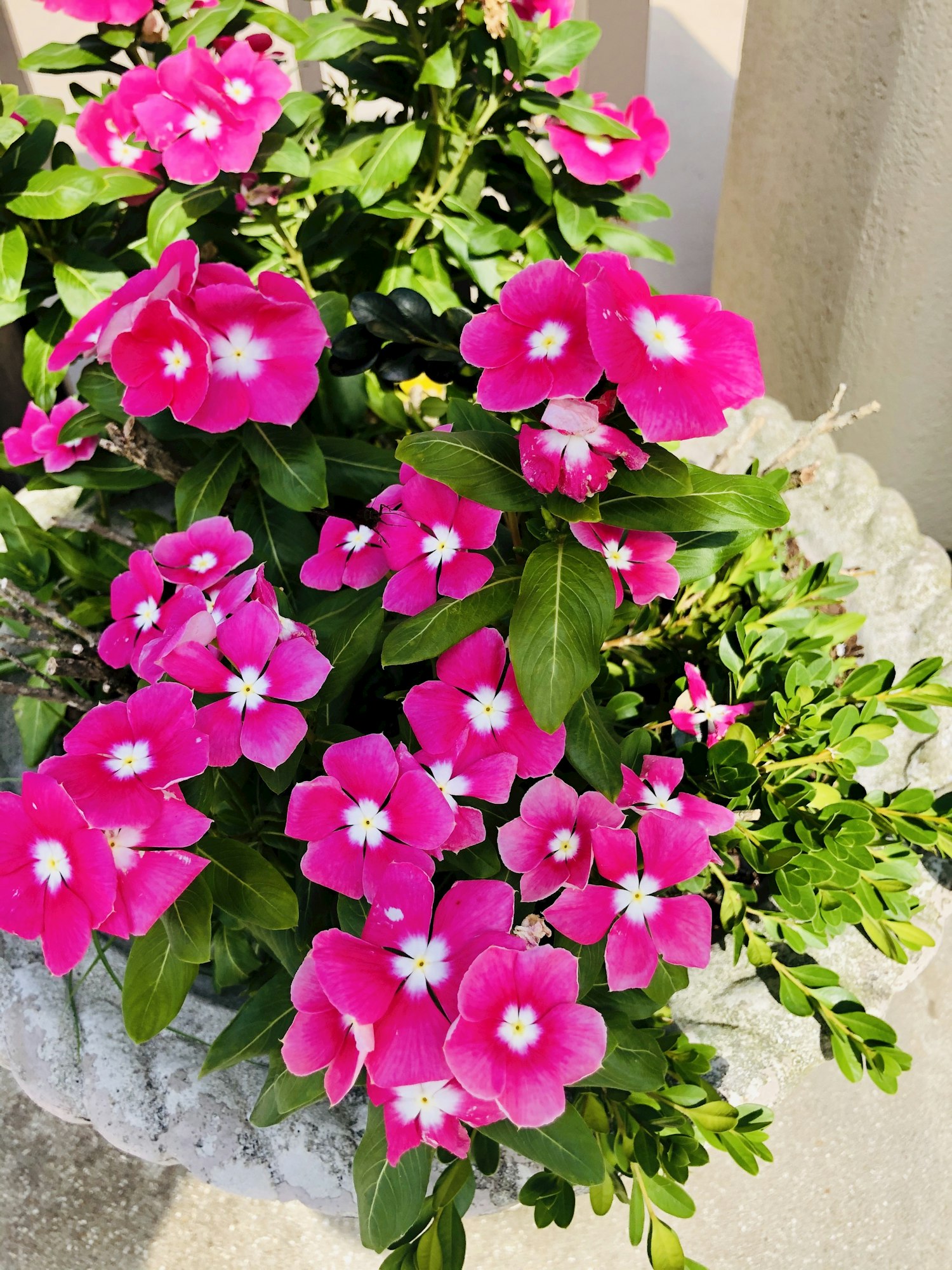
Impatiens, often known for brightening shady garden spots, are valued for their vibrant flowers and ease of care. They can flourish in both beds and containers, providing lush foliage and continuous blooms.
Get Gardening For Beginners
Our new EBOOK shows newcomers and green thumbs alike a step by step guide to growing the garden of their dreams.
- Planting Conditions: Thriving in partial to full shade and moist, well-drained soil, impatiens are ideal for locations that receive little direct sunlight.
- Blooming Period: These plants bloom from spring until the first frost, offering a long-lasting display of color in shaded areas.
- Color Varieties: Impatiens come in a wide range of colors, including pink, red, coral, white, and purple.
- Care Tips: Keep the soil consistently moist and apply a balanced liquid fertilizer every 4 to 6 weeks during the growing season. Deadheading is not necessary as impatiens will continue to bloom profusely.
5. Begonia
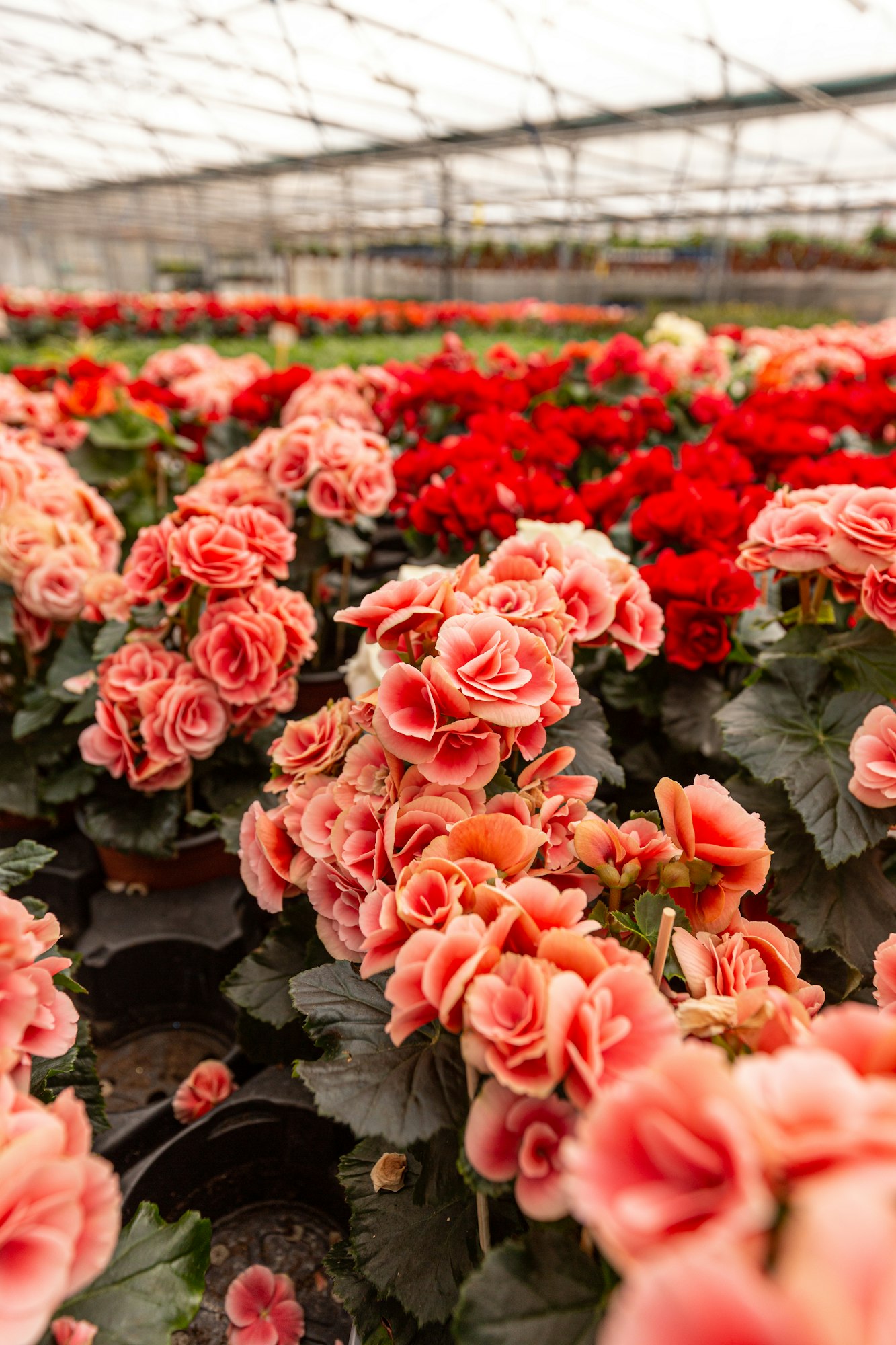
Begonias are versatile annuals known for their gorgeous flowers and foliage. Suitable for both indoor and outdoor environments, they can brighten up any space with minimal effort.
- Planting Conditions: They prefer well-drained soil and a location with filtered sunlight or partial shade, avoiding the harsh afternoon sun.
- Blooming Period: Begonias delight gardeners with their blooms from late spring through fall.
- Color Varieties: Flower colors include white, pink, red, and orange, while the leaves can also add visual interest with their varied shapes and colors.
- Care Tips: Water begonias at the base to avoid leaf spot diseases and let the soil dry slightly between waterings. A monthly dose of a balanced fertilizer during the growing season will support robust growth.
6. Snapdragon
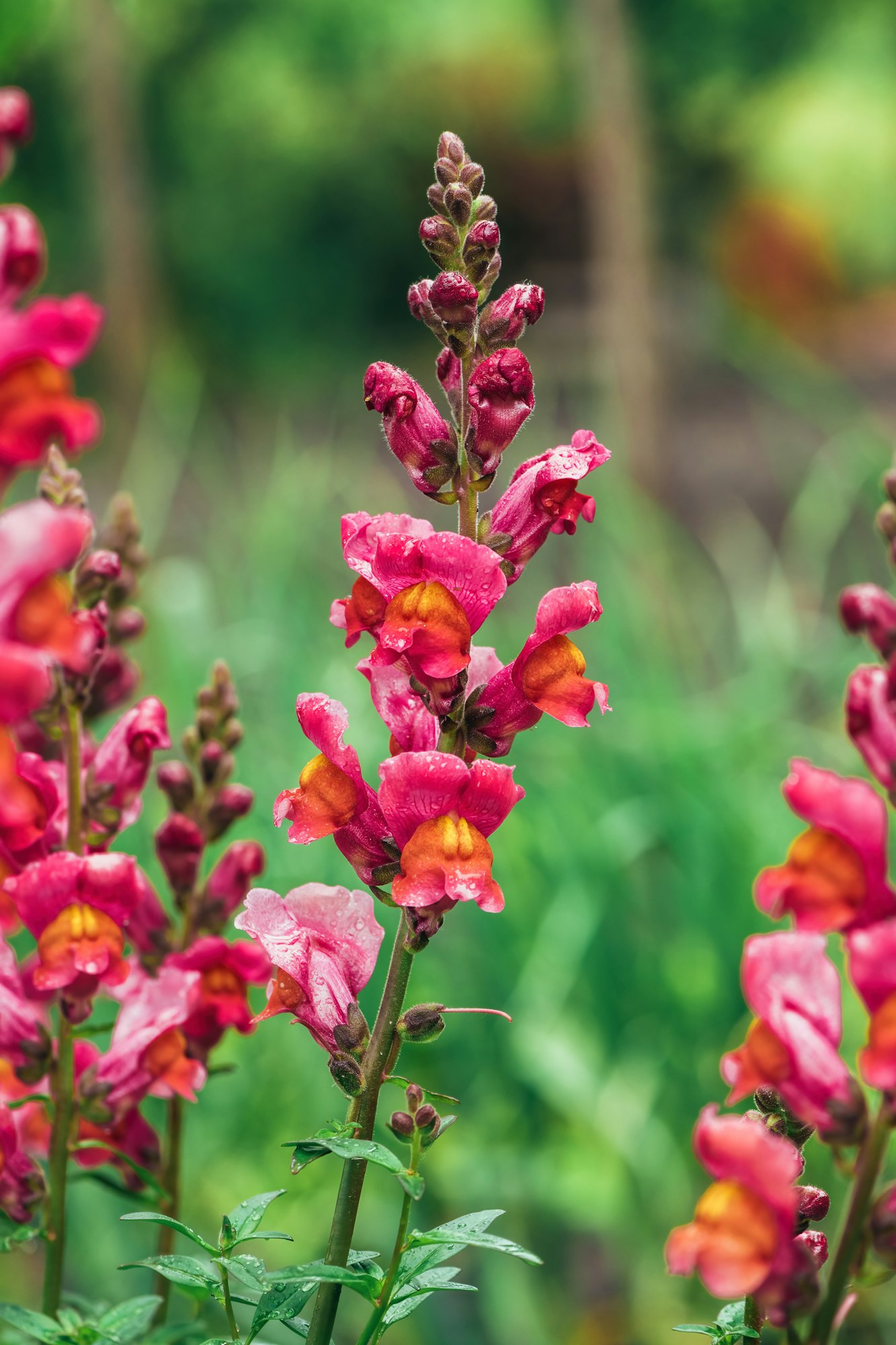
Snapdragons are cherished for their tall spikes of brightly colored flowers, which can add height and drama to any garden setting. They are cool-season annuals that can tolerate frost.
- Planting Conditions: Preferring full sun to partial shade and rich, well-draining soil, snapdragons perform best in cooler temperatures.
- Blooming Period: They typically bloom in the cooler months of spring and fall. In some regions, they can bloom throughout the winter.
- Color Varieties: Available in a rainbow of colors, including yellow, pink, red, orange, purple, white, and bi-colors.
- Care Tips: Keep the soil moist but not waterlogged. Deadheading spent flowers can encourage a second flush of blooms. A light application of fertilizer every 4-6 weeks can promote vigorous growth.
7. Cosmos
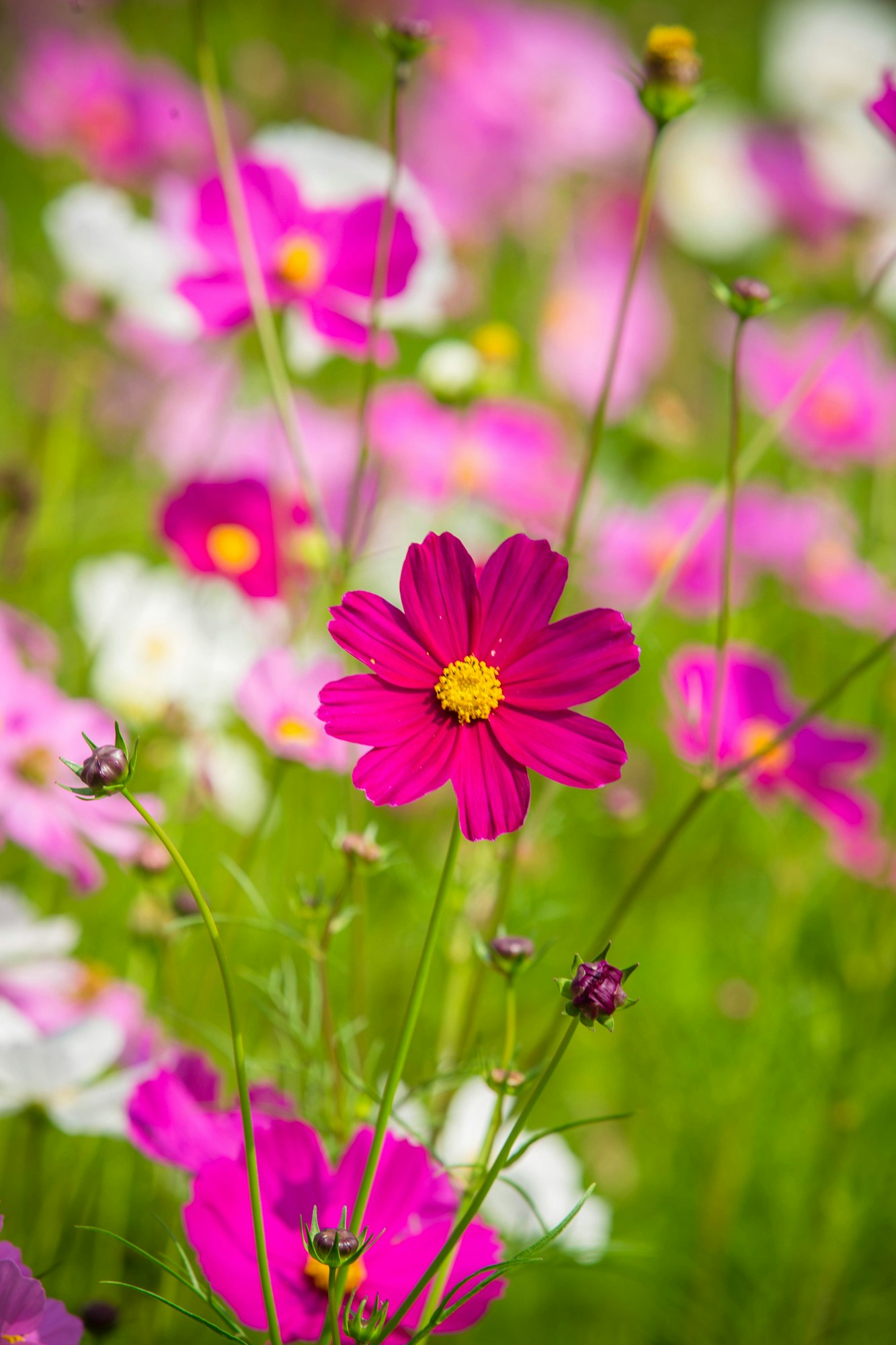
Cosmos are known for their delicate, daisy-like flowers and feathery foliage. They’re incredibly easy to grow from seed and can quickly fill a garden space with color.
- Planting Conditions: These flowers thrive in full sun and poor to moderately fertile, well-drained soil. They are drought-tolerant once established.
- Blooming Period: Cosmos bloom from midsummer through the first frost, offering a long season of color.
- Color Varieties: Colors range from white and pink to deep burgundy, with many varieties featuring a striking yellow center.
- Care Tips: Water regularly, but be careful not to over-water. Cosmos benefit from occasional fertilization but are generally low-maintenance. Deadheading can encourage more blooms.
8. Geranium
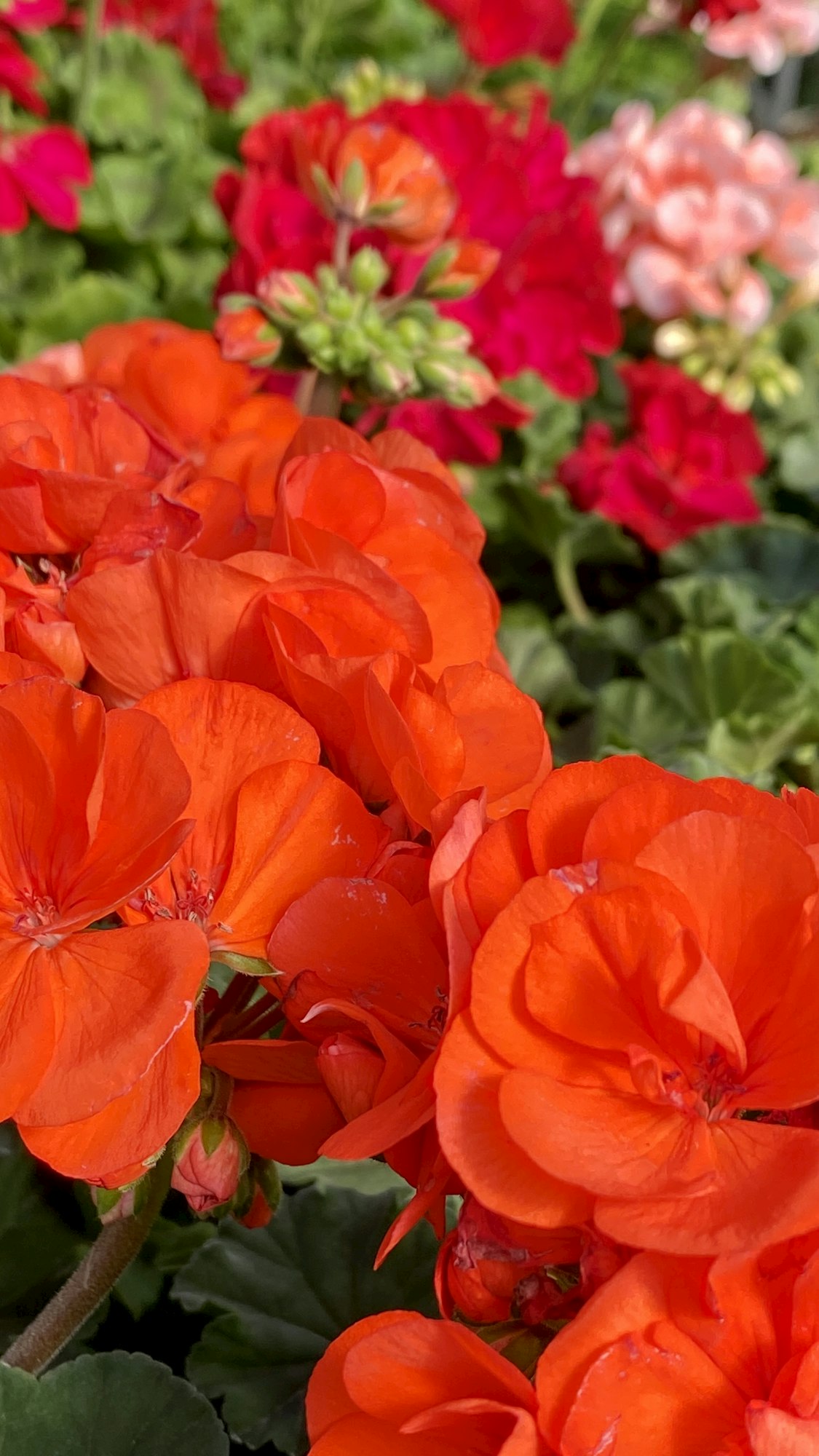
Geraniums are popular for their bright, cheerful flowers and aromatic foliage. They work well in containers, hanging baskets, and garden beds.
- Planting Conditions: They prefer full sun but can tolerate partial shade, and require well-drained soil.
- Blooming Period: Geraniums can bloom from spring until frost, with proper care.
- Color Varieties: Flower colors include red, pink, salmon, orange, and white, often with attractive foliage that can be just as decorative.
- Care Tips: Allow the soil to dry out between waterings, and deadhead regularly to encourage new blooms. A monthly feed with a water-soluble fertilizer can keep them looking their best.
9. Sunflower (Annual Varieties)

Known for their large, sunny heads, annual sunflowers bring a burst of joy and color. They range from towering giants to smaller, multi-branching varieties suitable for cutting.
- Planting Conditions: Sunflowers thrive in full sun and well-drained soil. They’re quite drought-resistant and grow best in warm conditions.
- Blooming Period: They bloom from summer to early fall, tracking the sun across the sky in their younger stages.
- Color Varieties: While classic sunflowers are yellow, there are varieties in shades of orange, red, brown, and even multi-colored.
- Care Tips: Water deeply but infrequently to encourage deep root growth. Support taller varieties to protect them from wind. Minimal fertilization is needed.
10. Pansy
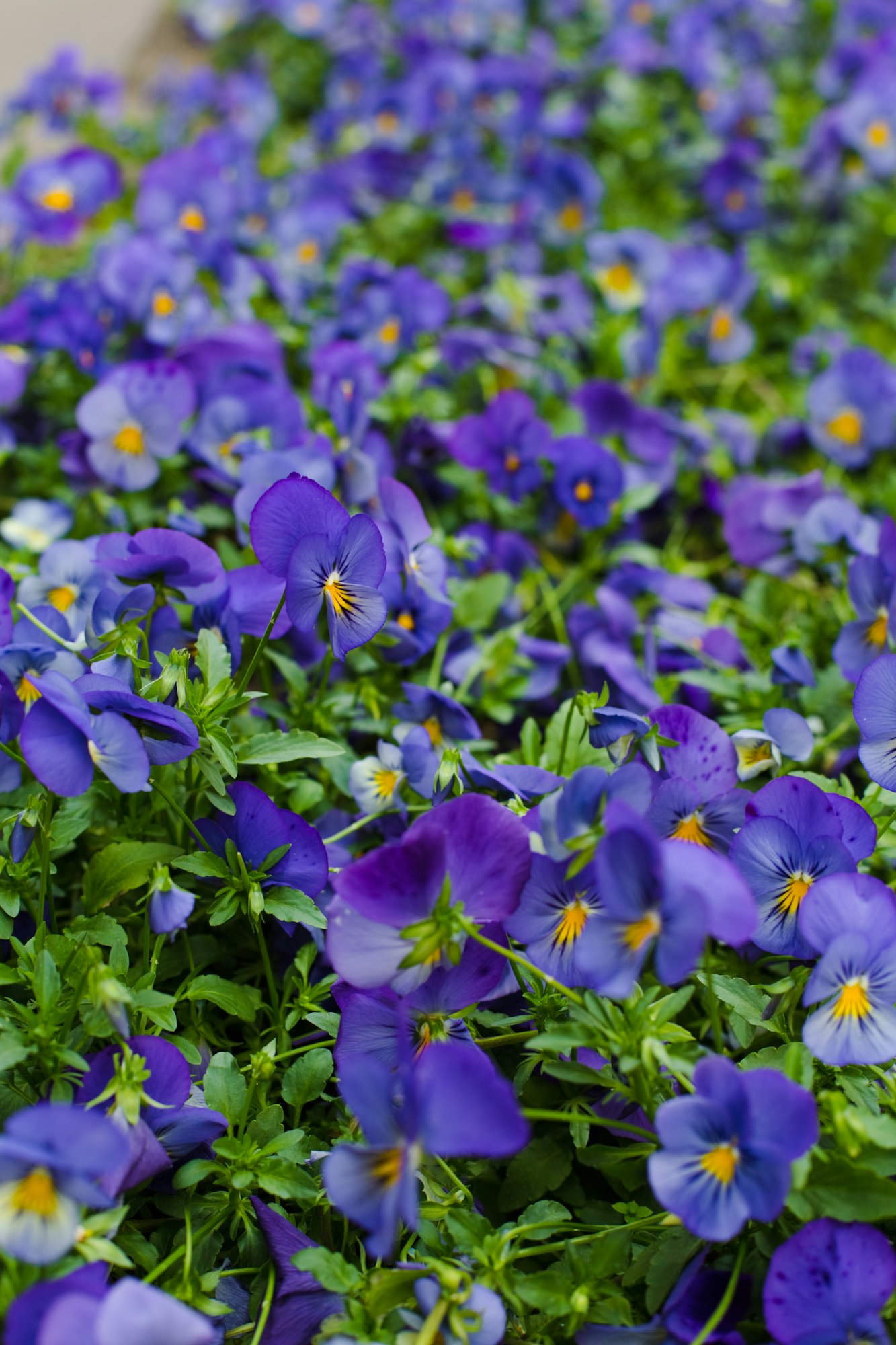
Pansies are known for their charming, colorful faces and resilience in cold weather. These flowers can bring life to your garden in the cooler parts of the year when other plants might not thrive.
- Planting Conditions: Pansies prefer cooler temperatures and can be planted in well-drained soil in full sun to partial shade. They’re ideal for both spring and fall gardens.
- Blooming Period: Depending on the region, pansies can bloom in the spring and fall, and sometimes throughout the winter in milder climates.
- Color Varieties: Pansies come in a wide range of colors, including purple, blue, red, orange, yellow, white, and even bicolor patterns.
- Care Tips: Keep the soil consistently moist and remove faded flowers to encourage more blooms. A monthly application of a balanced fertilizer can support their vibrant display.
11. Calibrachoa
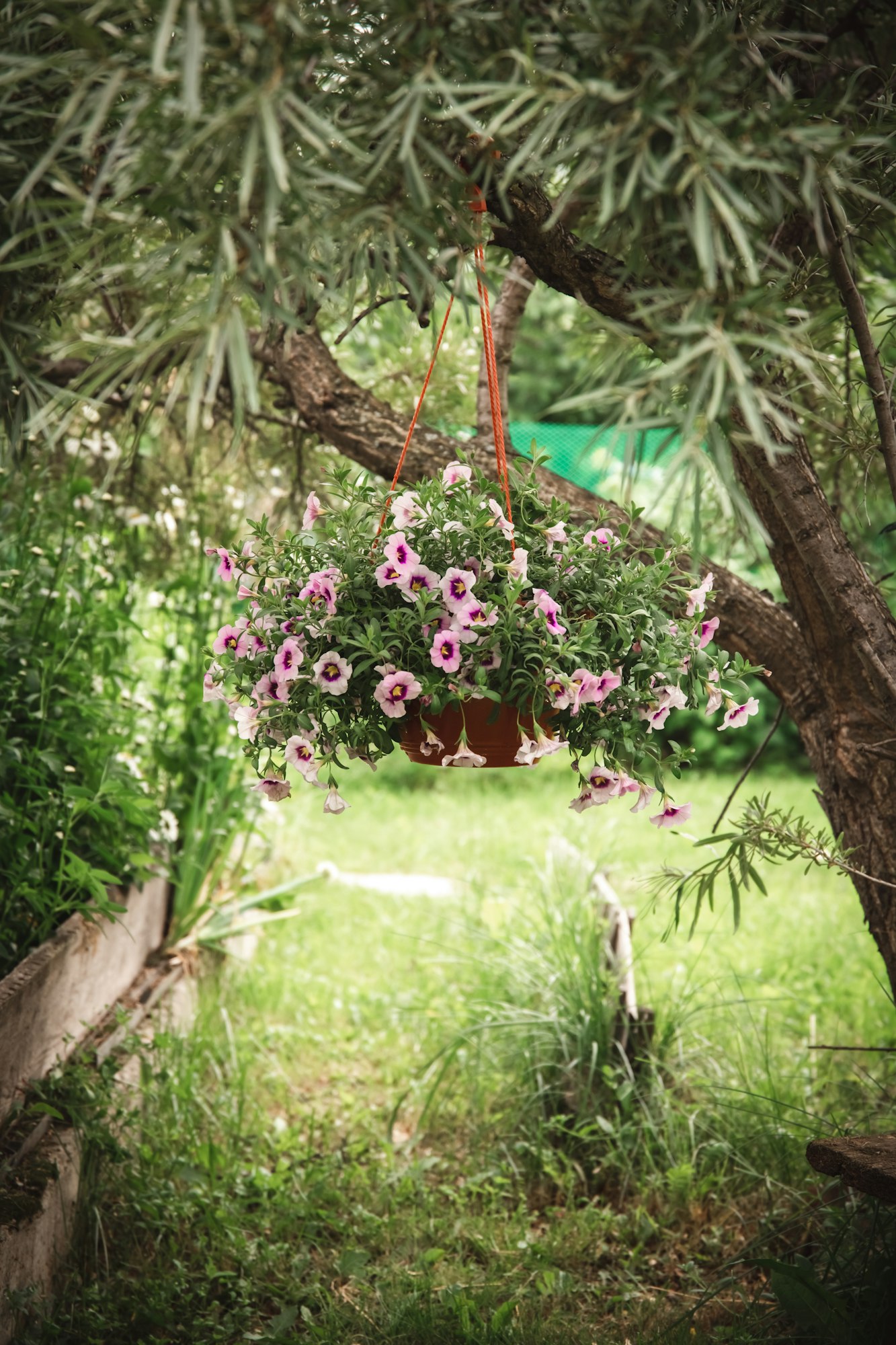
Calibrachoa, often called “million bells,” resembles miniature petunias and is celebrated for its prolific blooming and range of colors. These trailing plants are perfect for hanging baskets and containers.
Get Gardening For Beginners
Our new EBOOK shows newcomers and green thumbs alike a step by step guide to growing the garden of their dreams.
- Planting Conditions: Plant in well-drained soil in a location that receives full sun. They do well in both ground beds and containers with adequate drainage.
- Blooming Period: From spring through fall, calibrachoa provides a continuous cascade of color.
- Color Varieties: Available in many shades, including pink, red, yellow, orange, purple, and white, often with beautiful veining or color gradients.
- Care Tips: Water regularly, allowing the soil to dry slightly between waterings. Feed every two weeks with a liquid, high-quality fertilizer to encourage abundant flowering.
12. Lobelia
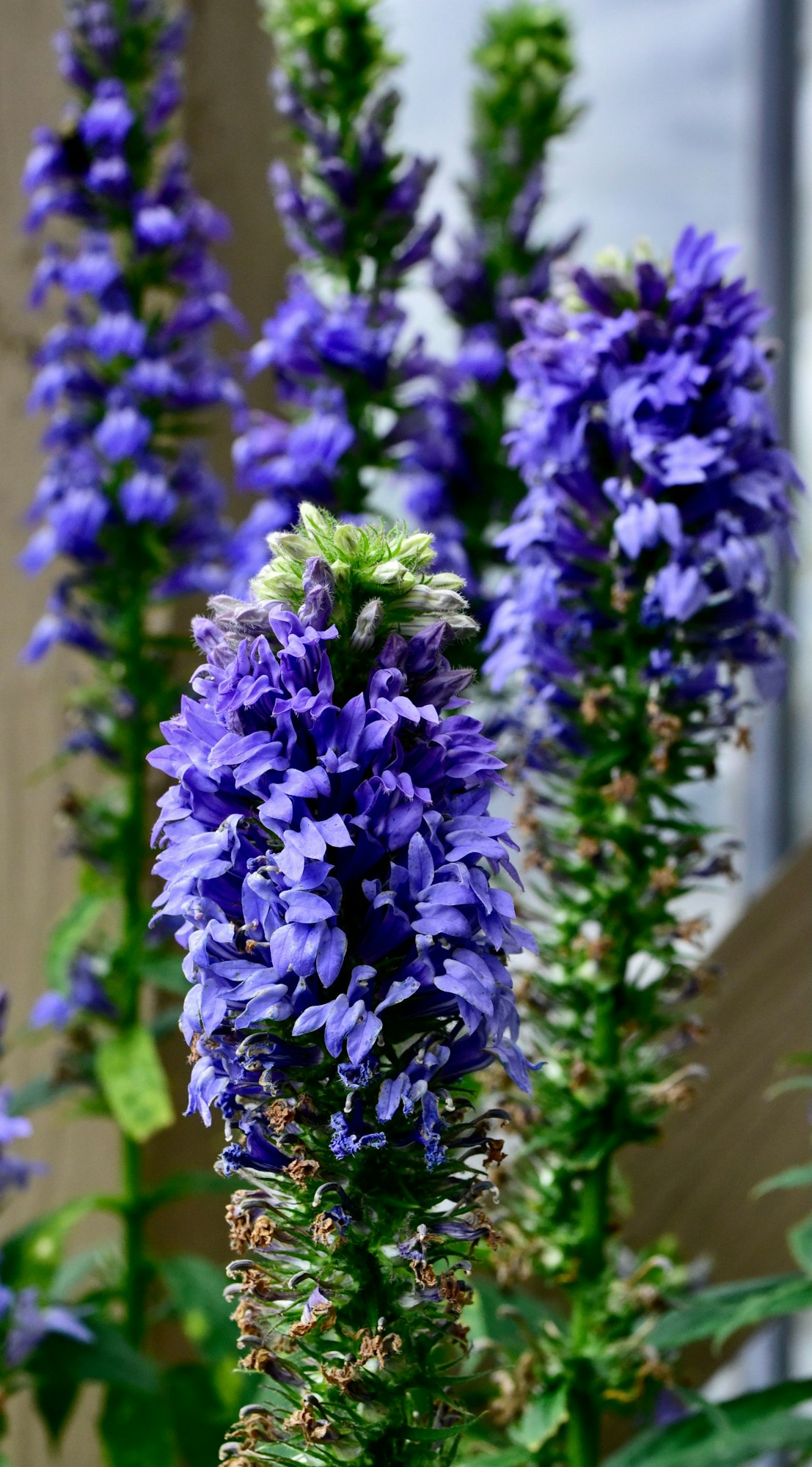
Lobelia is enchanted with delicate flowers and a profusion of colors. Its cascading habit makes it an excellent choice for borders, hanging baskets, and window boxes.
- Planting Conditions: Lobelia thrives in cooler temperatures and prefers well-drained soil in partial to full sun.
- Blooming Period: It blooms prolifically from late spring to early fall, adding a splash of color to the garden for several months.
- Color Varieties: Lobelia flowers are typically blue, violet, white, or red, creating a stunning visual effect when planted en masse.
- Care Tips: Keep the soil evenly moist and apply a balanced liquid fertilizer monthly. Lobelia can benefit from afternoon shade in hotter climates to prevent it from going dormant in midsummer.
13. Alyssum
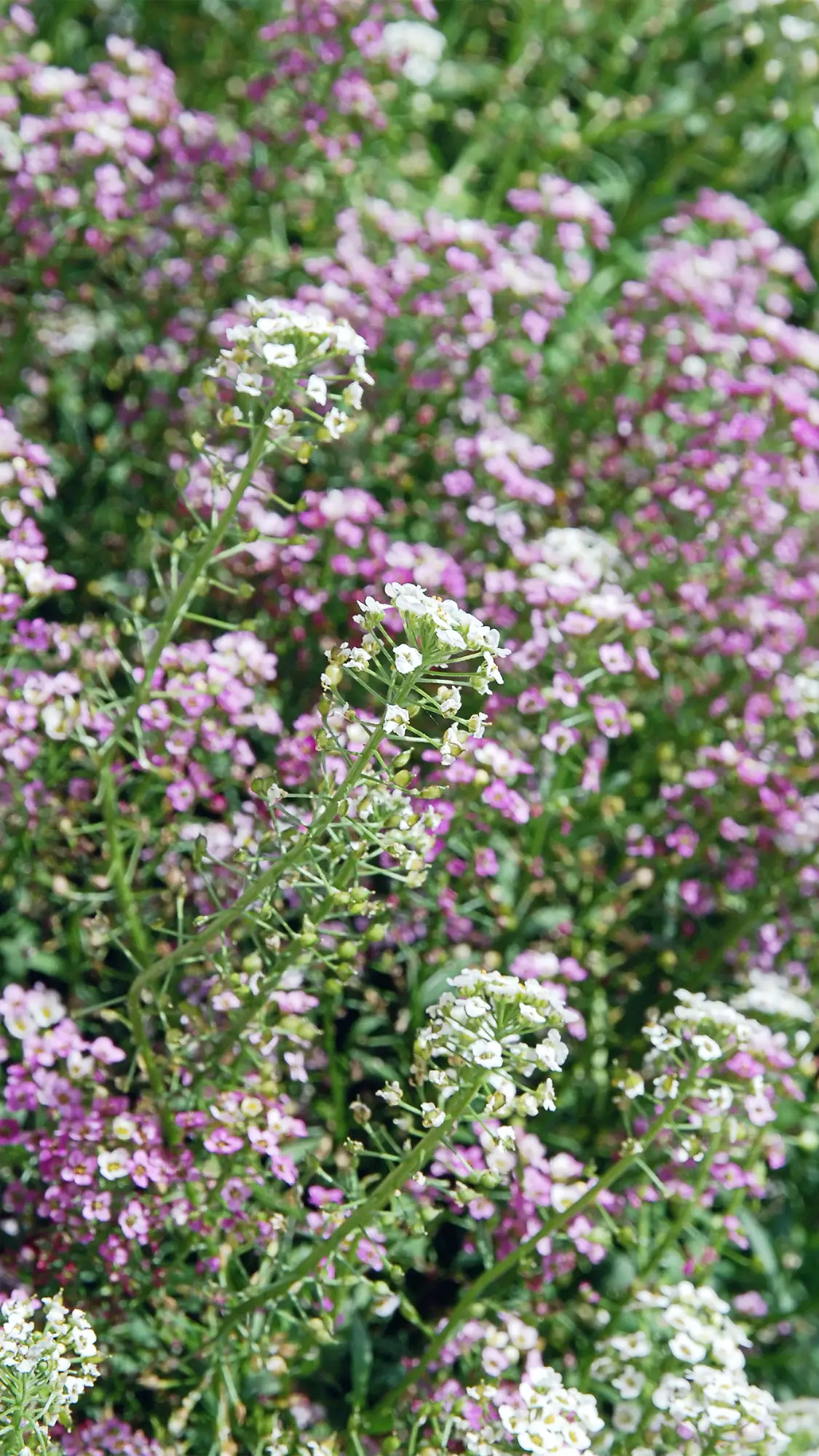
Sweet alyssum is cherished for its tiny, fragrant flowers and ability to quickly fill spaces with a soft, honey-scented carpet of color. It’s a fantastic ground cover or edging plant.
- Planting Conditions: Alyssum prefers full sun to partial shade and well-drained soil. It’s highly adaptable and can even thrive in poor soil.
- Blooming Period: Blooming starts in spring and can continue through fall, with peak flowering in cooler weather.
- Color Varieties: Common colors include white, pink, purple, and yellow, with the white varieties being especially fragrant.
- Care Tips: Water regularly, especially in hot weather, to keep the soil moist. Alyssum is low-maintenance but benefits from occasional feeding with a general-purpose fertilizer.
14. Salvia
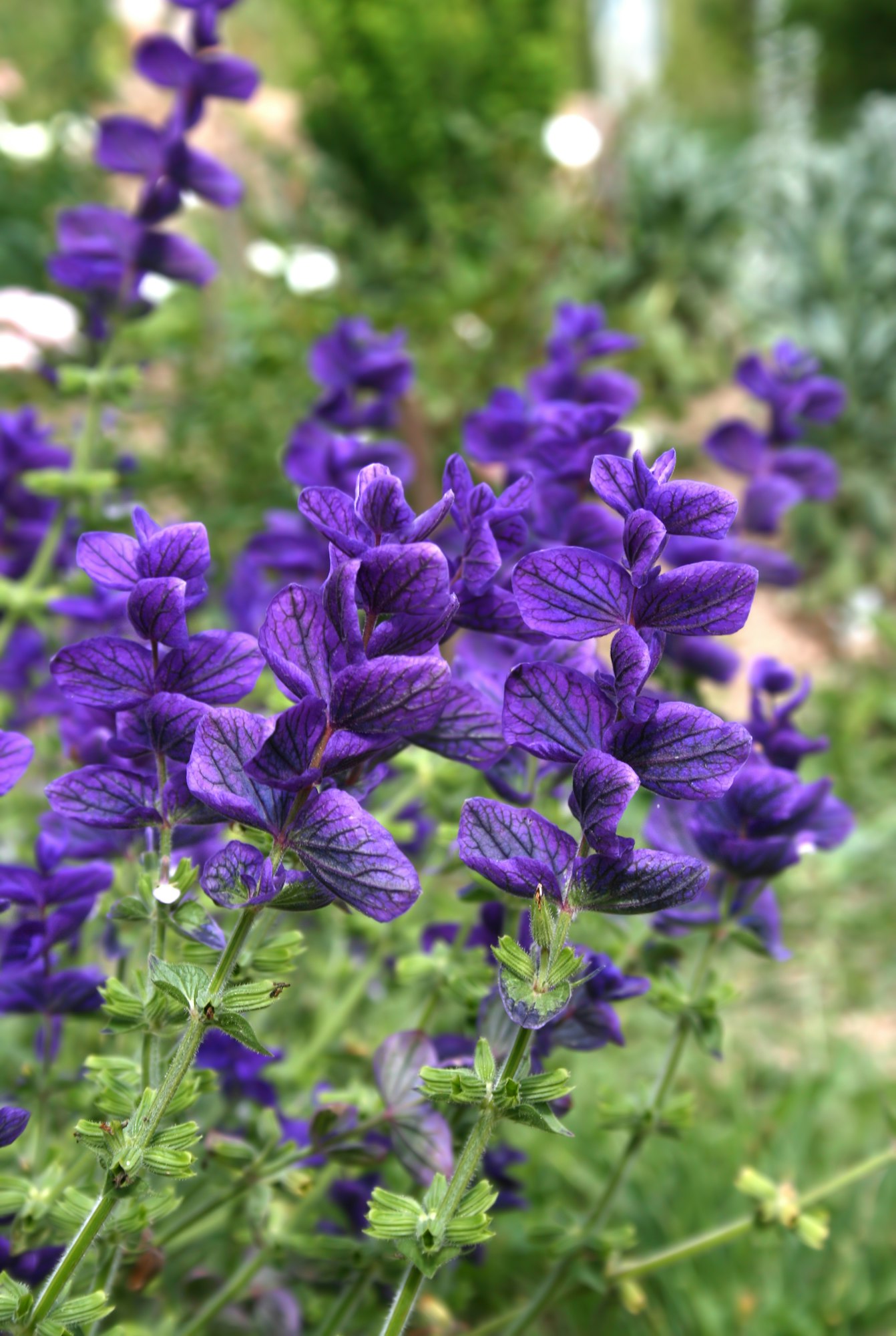
Salvia, or sage, is known for its spiky flowers and aromatic foliage, attracting bees, butterflies, and hummingbirds to the garden. It’s a standout in beds, borders, and containers.
- Planting Conditions: Salvia does best in full sun and well-drained soil. It’s tolerant of dry conditions once established, making it a good choice for xeriscaping.
- Blooming Period: It typically blooms from late spring through summer, with some varieties continuing into fall.
- Color Varieties: Flowers can be blue, purple, red, pink, or white, depending on the variety, adding a vibrant pop of color to any garden setting.
- Care Tips: Water moderately, allowing the soil to dry out between waterings. Deadhead spent blooms to encourage continued flowering. Apply a balanced fertilizer in the spring to support robust growth.
15. Celosia
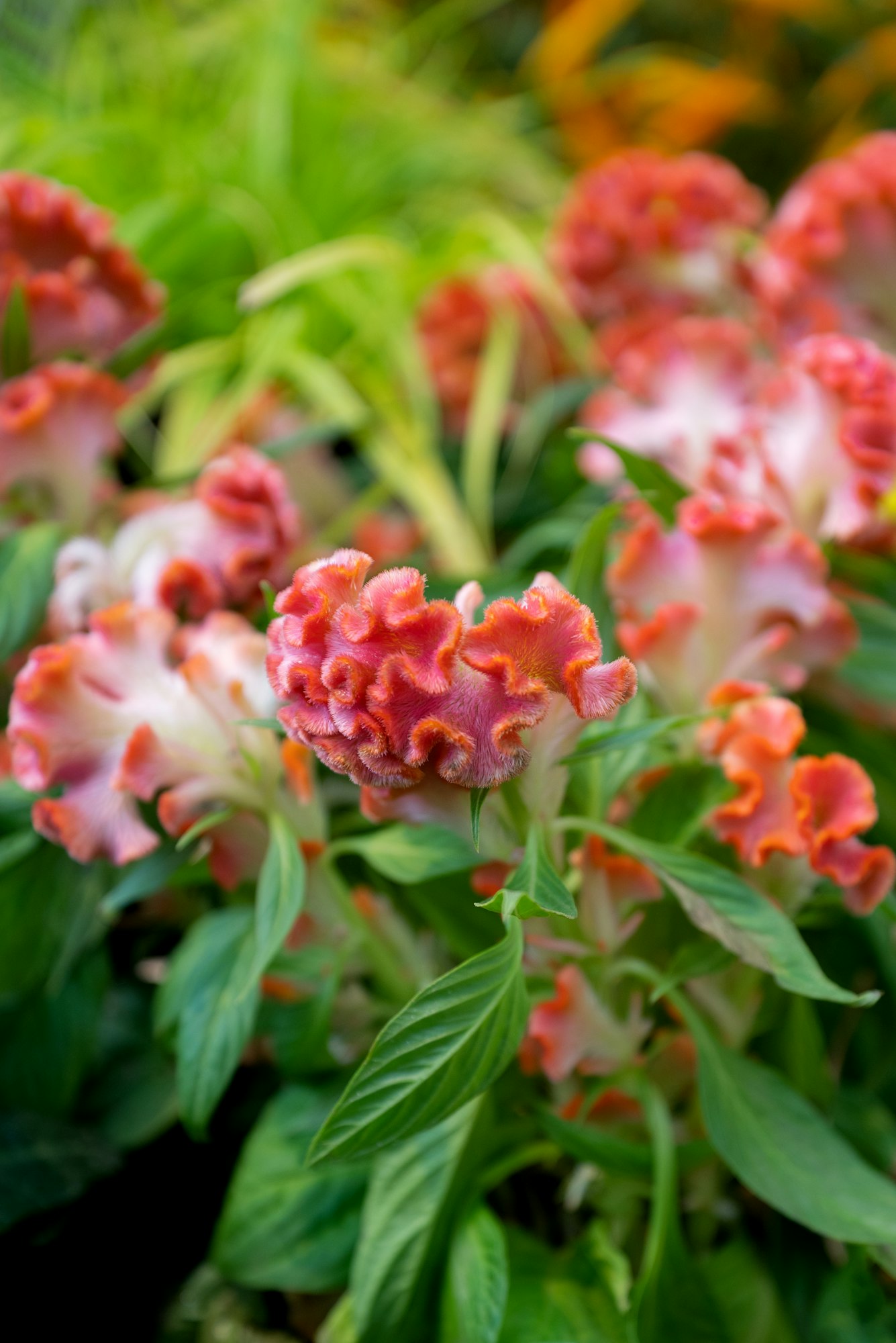
Celosia, with its striking, brightly colored plumes and crested heads, adds texture and a vivid pop of color to the garden. These plants stand out for their unique flower shapes, ranging from feathery plumes to brain-like crests.
- Planting Conditions: Celosia thrives in full sun and well-drained soil. It prefers warm weather and does not tolerate cold well.
- Blooming Period: It blooms from summer to fall, providing long-lasting color in the garden.
- Color Varieties: Celosia comes in a range of colors, including red, pink, orange, yellow, and purple.
- Care Tips: Water regularly to keep the soil moist, especially in dry conditions. Apply a balanced fertilizer every 4-6 weeks to support growth and blooming. Deadheading is not necessary as Celosia continues to look attractive even after the blooms fade.
16. Gomphrena
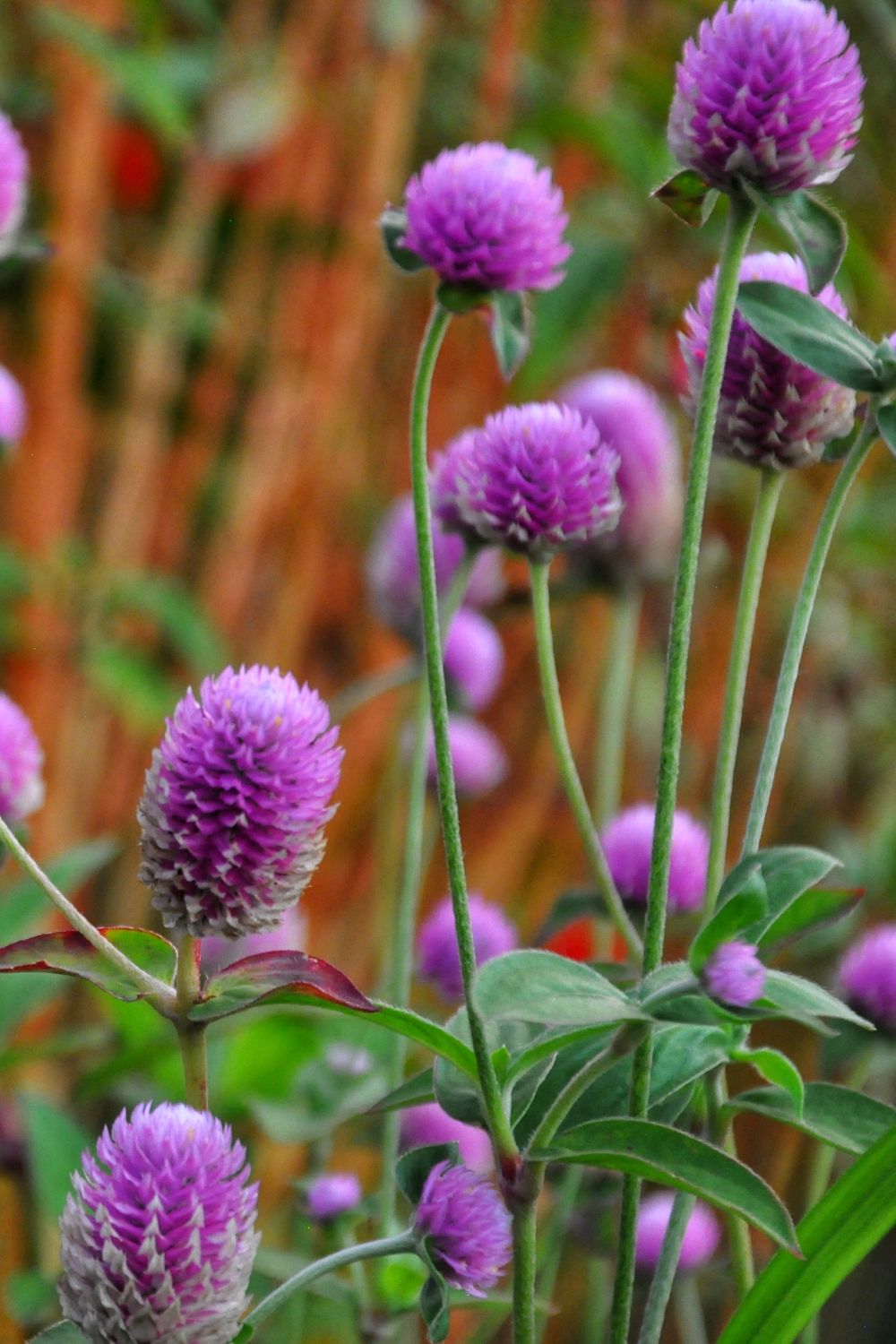
Gomphrena, or globe amaranth, is known for its globe-shaped flowers and enduring beauty. This tough plant can withstand hot, dry conditions, making it an excellent choice for sunny, dry areas of the garden.
- Planting Conditions: It prefers full sun and well-drained soil. Gomphrena is drought-tolerant once established, making it a low-maintenance option for gardeners.
- Blooming Period: Gomphrena blooms from summer through fall, offering continuous color and texture.
- Color Varieties: The flowers are typically purple, pink, white, or red, and are great for both fresh and dried floral arrangements.
- Care Tips: Water moderately, allowing the soil to dry out between waterings. Minimal fertilization is needed. Deadheading is not necessary, as the plant continues to produce new blooms.
17. Portulaca
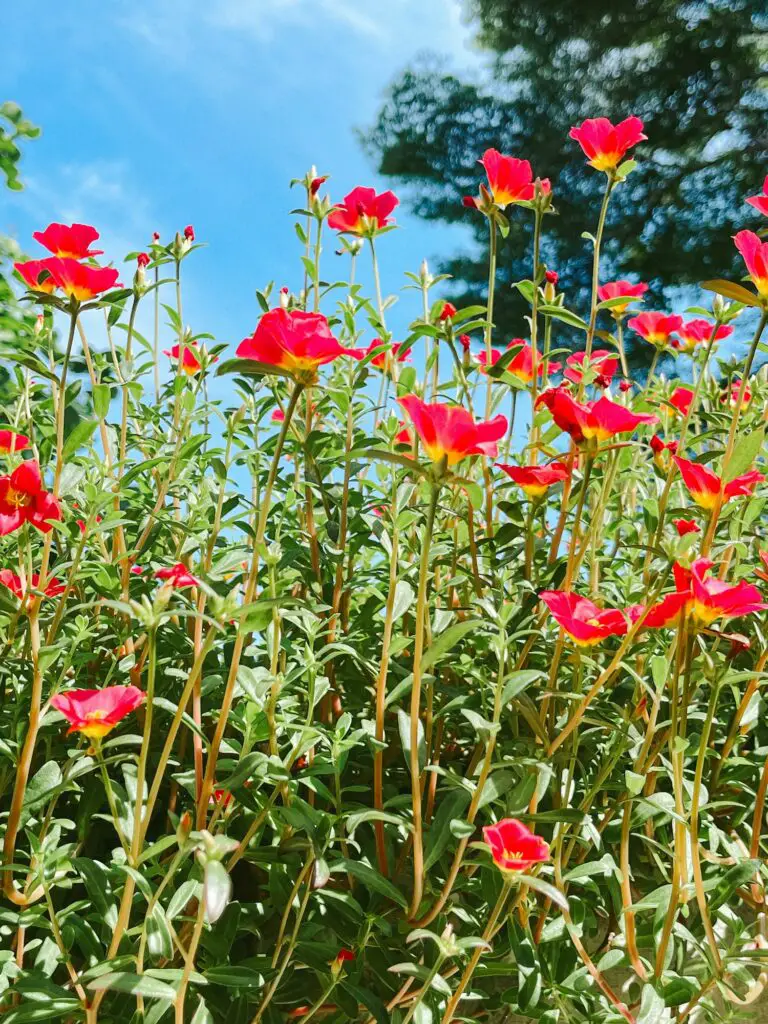
Portulaca or moss rose, is a succulent annual known for its vibrant, colorful flowers and drought-tolerant nature. It’s perfect for rock gardens, borders, and containers.
- Planting Conditions: This plant loves hot, sunny locations and well-drained soil. It’s an excellent choice for areas where other plants might struggle.
- Blooming Period: Portulaca flowers from late spring through the summer, opening its blooms in full sunlight.
- Color Varieties: It offers a range of colors, including pink, red, orange, yellow, and white.
- Care Tips: Water sparingly, as portulaca, is highly drought-resistant. Overwatering can harm the plant. No fertilization is usually necessary, making it a carefree addition to any garden.
18. Vinca
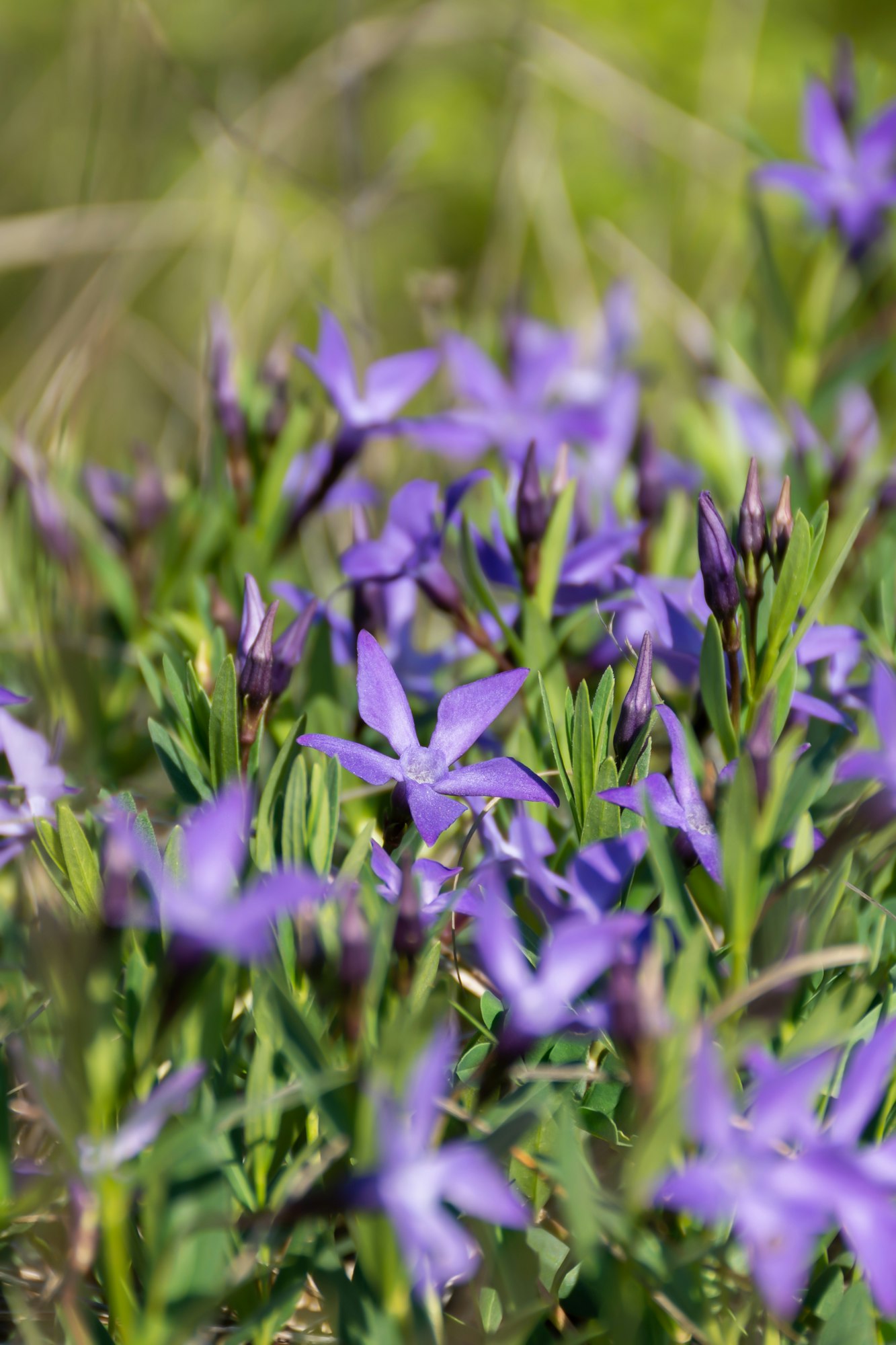
Vinca, or periwinkle, features glossy leaves and star-shaped flowers. It’s highly valued for its ability to thrive in hot, dry conditions, making it a staple in many gardens.
- Planting Conditions: Vinca does best in full sun to partial shade and well-drained soil. It’s ideal for challenging sites where other plants might falter.
- Blooming Period: It produces flowers from early summer until the first frost, offering a long season of color.
- Color Varieties: Available in white, pink, red, and purple, often with a contrasting eye in the center of the bloom.
- Care Tips: Water regularly but let the soil dry out between waterings to prevent root rot. Apply a general-purpose fertilizer monthly to encourage lush growth and abundant flowering.
19. Gazania
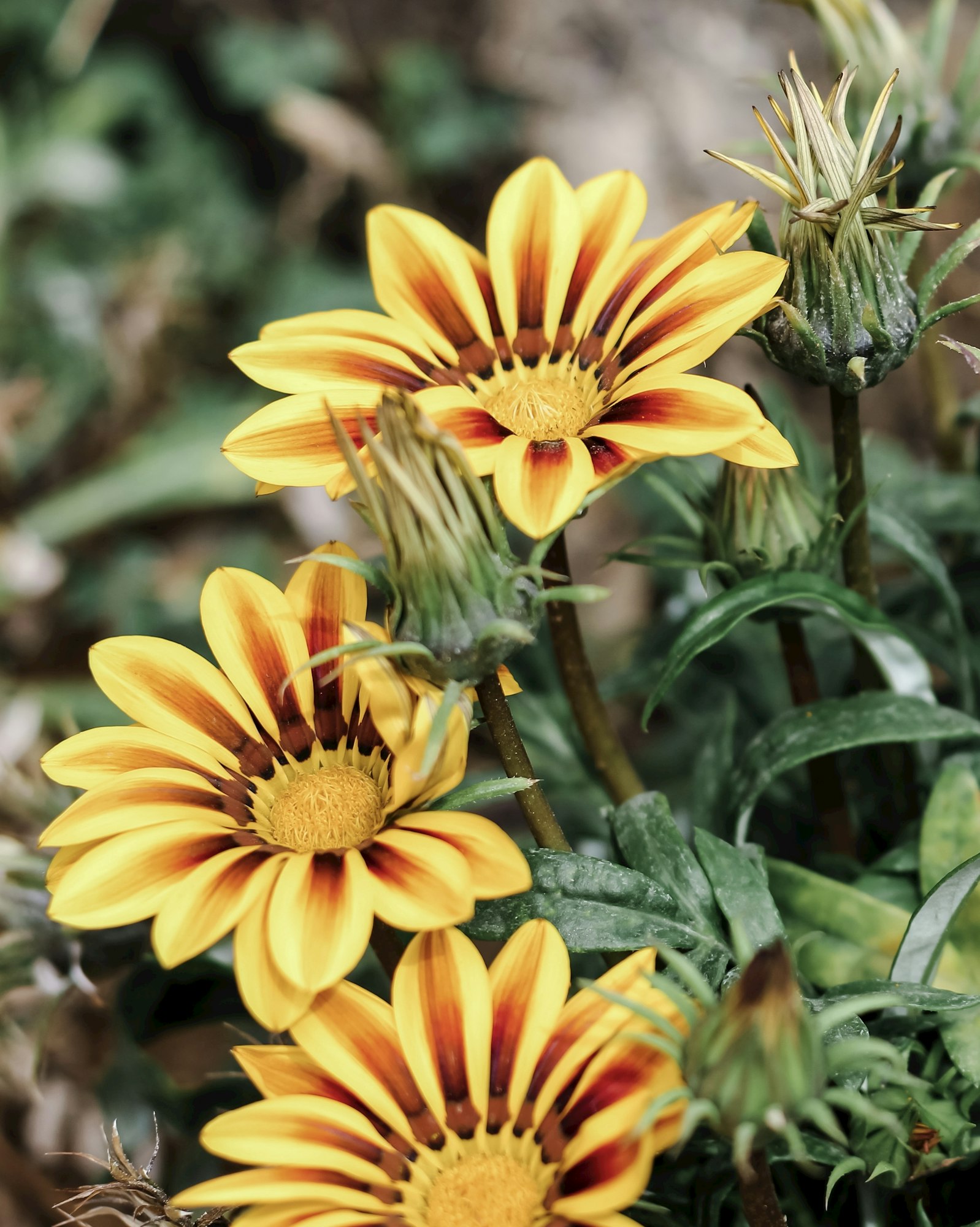
Gazania is known for its bold, daisy-like flowers that open in full sun. This drought-tolerant plant is perfect for sunny, dry spots where other flowers might struggle.
- Planting Conditions: Gazania thrives in full sun and well-drained soil. It’s an excellent choice for areas with hot, dry summers.
- Blooming Period: The blooming season stretches from late spring through fall, with flowers closing at night and on cloudy days.
- Color Varieties: Gazania flowers come in shades of yellow, orange, red, pink, and white, often with striking patterns on the petals.
- Care Tips: Water moderately, allowing the soil to dry between waterings. Gazania is generally low-maintenance and does not require frequent fertilization. Deadheading can encourage more blooms but is not strictly necessary.
20. Nasturtium (Tropaeolum majus)
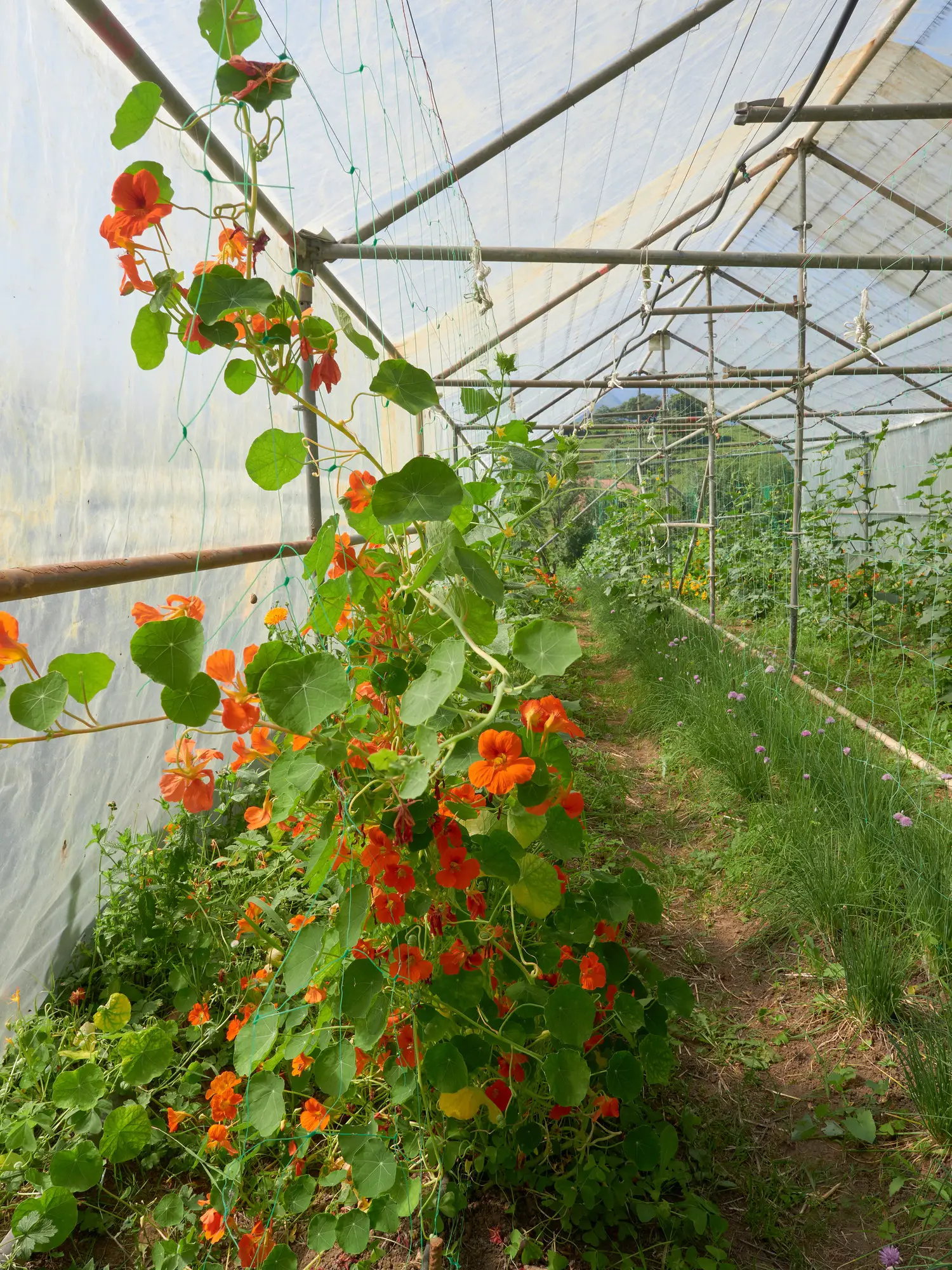
Nasturtium is a popular annual flowering plant known for its vibrant flowers and edible leaves. It belongs to the Tropaeolaceae family and is native to South and Central America. Nasturtiums are characterized by their round, flat leaves and funnel-shaped flowers.
- Planting Conditions: Nasturtiums prefer well-drained soil with a pH between 6.0 and 7.5. They thrive in full sun but can tolerate partial shade, especially in hotter climates.
- Blooming Period: Nasturtiums typically bloom from early summer to fall, depending on the climate and planting time.
- Color Varieties: Nasturtiums come in a variety of colors, including shades of yellow, orange, red, and cream.
- Care Tips: Watering: Keep the soil evenly moist but not waterlogged. Nasturtiums are drought-tolerant once established but appreciate regular watering, especially during dry periods.
Planting and maintaining annual flowers can be a rewarding experience, providing your garden with vibrant colors and textures throughout the growing season.





